

Giraph - Welcome To Apache Giraph! Graph DBs. Www.cs.iastate.edu/~silvescu/papers/gdb/report.pdf. Big data woes: Which database should I use? I've been in Chicago for the last few weeks setting up our first satellite office for my company. While Silicon Valley may be the home of big data vendors, Chicago is the home of the big data users and practitioners. So many people here "get it" that you could go to a packed meetup or big data event nearly every day of the week. Big data events almost inevitably offer an introduction to NoSQL and why you can't just keep everything in an RDBMS anymore. Right off the bat, much of your audience is in unfamiliar territory. There are several types of NoSQL databases and rational reasons to use them in different situations for different datasets. Part of the reason there are so many different types of NoSQL databases lies in the CAP theorem , aka Brewer's Theorem.
Another reason for this divergence can be found in basic computer science or even more basic mathematics. Relational databases are based on relational algebra , which is more or less an outgrowth of set theory . Document databases. GraphSON Reader and Writer Library · tinkerpop/blueprints Wiki. <dependency><groupId>com.tinkerpop.blueprints</groupId><artifactId>blueprints-core</artifactId><version>??
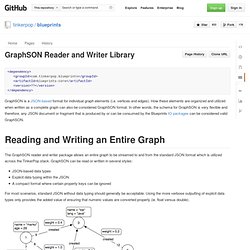
</version></dependency> GraphSON is a JSON-based format for individual graph elements (i.e. vertices and edges). How these elements are organized and utilized when written as a complete graph can also be considered GraphSON format. In other words, the schema for GraphSON is very flexible and therefore, any JSON document or fragment that is produced by or can be consumed by the Blueprints IO packages can be considered valid GraphSON. Reading and Writing an Entire Graph The GraphSON reader and writer package allows an entire graph to be streamed to and from the standard JSON format which is utilized across the TinkerPop stack.
JSON-based data types Explicit data typing within the JSON A compact format where certain property keys can be ignored. Upl_docs/publications/an-empirical-comparison-of-graph-databases.pdf. Sparksee high-performance graph database. Evaluation license Evaluate Sparksee for free downloading the evaluation version right now.

The evaluation license provided has the following configuration: XSMALL size (up to 1M objects) / 1 session / DEXHA disabled If you need a bigger configuration consider the rest of license options. Free License! Required information will be only used to manage the download of the software and to provide promotional news in the future, but it will never be public or distributed to third parties. Sparsity Technologies encourages research with Sparksee by offering free licenses to PhD students, academics and other university staff, for non-commercial purposes.
Sparsity Technologies encourages the use of Sparksee by offering free licenses to selected companies during their development stages. Functionalities & Benefits We offer special functionalites and benefits for bigger corporations that require high level tailored support during their development and deployment of applications using Sparksee. DEX (Graph database) DEX is a high-performance and scalable graph database management system written in C++.
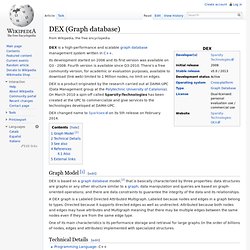
Its development started on 2006 and its first version was available on Q3 - 2008. Fourth version is available since Q3-2010. There's a free community version, for academic or evaluation purposes, available to download (link web) limited to 1 Million nodes, no limit on edges. DEX is a product originated by the research carried out at DAMA-UPC (Data Management group at the Polytechnic University of Catalonia). On March 2010 a spin-off called Sparsity-Technologies has been created at the UPC to commercialize and give services to the technologies developed at DAMA-UPC. DEX changed name to Sparksee on its 5th release on February 2014. A DEX graph is a Labeled Directed Attributed Multigraph. One of its main characteristics is its performance storage and retrieval for large graphs (in the order of billions of nodes, edges and attributes) implemented with specialized structures.
[1108.1780] Temporal Networks. Representing time dependent graphs in Neo4j · SocioPatterns/neo4j-dynagraph Wiki. Background Large-scale data collection efforts using wearable sensors to mine for proximity of individuals (for example, the SocioPatterns project) produce time-varying social graphs, where nodes are individuals, edges represent proximity/contact relations of individuals, and the proximity graph changes over time.
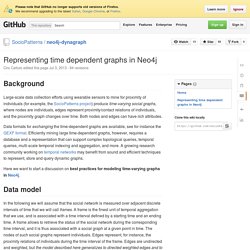
Both nodes and edges can have rich attributes. Data formats for exchanging the time-dependent graphs are available, see for instance the GEXF format. Efficiently mining large time-dependent graphs, however, requires a database and a representation that can support complex topological queries, temporal queries, multi-scale temporal indexing and aggregation, and more. A growing research community working on temporal networks may benefit from sound and efficient techniques to represent, store and query dynamic graphs. Welcome to my Wiki [Narayanaswamy N S] Big-O Algorithm Complexity Cheat Sheet. Cassandra Client Library User Mailing List. Re: Json object as value can anyone post some examples of how to do this?
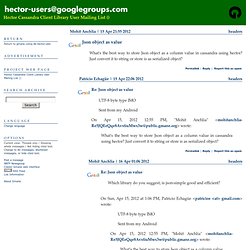
Code for helper classes? As i understand it i need some code that will take json and create the appropriate insertions or take a Result and give me json, or preferably an object. the examples i saw all used iterators to set the object fields but that seems like a lot of code to write. does the api already support object mapping built in? Thanks, Indexing JSON in Cassandra. Cassandra has native indexing capabilities, but those capabilities only work if the values stored in your columns are the values you want indexed.
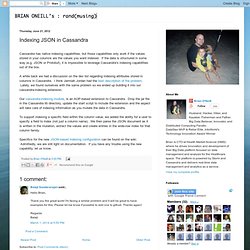
If the data is structured in some way (e.g. JSON or Protobuf), it is impossible to leverage Cassandra's indexing capabilities out of the box. A while back we had a discussion on the dev list regarding indexing attributes stored in columns in Cassandra. I think Jermiah Jordan had the best description of the problem. Lately, we found ourselves with the same problem so we ended up building it into our cassandra-indexing extension. Our cassandra-indexing module, is an AOP-based extension to Cassandra. To support indexing a specific field within the column value, we added the ability for a user to specify a field to index (not just a column name).